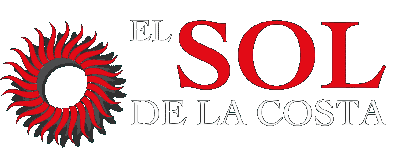

![noplala fiesta [noplala fiesta]](images/nopala_fiesta_1.jpeg) In the Chatino country of the southern Sierra foothills, for example,
the people of Santos Reyes Nopala observe their full calendar of
religious holidays with unbridled enthusiasm. In a sense, this is a
means of maintaining a link with the prehispanic past, when the people
were required to celebrate some aspect of ceremonial life every single
day.
In the Chatino country of the southern Sierra foothills, for example,
the people of Santos Reyes Nopala observe their full calendar of
religious holidays with unbridled enthusiasm. In a sense, this is a
means of maintaining a link with the prehispanic past, when the people
were required to celebrate some aspect of ceremonial life every single
day.
The town honors its patron saints, the Three Kings, early January with two weeks of parades, feasts, dances, rodeos, religious rites and an enormous market which transforms the center of the town into a great bazaar offering every conceivable kind of merchandise.
In other parts of the coast, where the inhabitants share more heterogeneous roots, the fiesta is also an essential part of the rhythm of life. It wouldn't be a costeña fiesta without some basic ingredients: Fireworks, especially the castillo, dances, jaripeos, brass bands and sometimes cock fights among other events.
Fireworks
You can always buy fireworks at the market and the larger tiendas, because any birthday, wedding or confirmation celebration must have its punctuation of gunpowder explosions and rain of multicolored fire. But for a real fiesta, it's necessary to hire the services of a pirotécnico or cohetero, a pyrotechnist or rocket maker, a master of the ancient art of fireworks. And, indeed artists they are.
![castillo [castillo]](images/intro-cal.jpeg) The pirotécnicos travel throughout the region to build el castillo,
the castle, but in reality a �tower made of bamboo and cane. It is
rigged with a series of spinning, whizzing exploding wheels, which are
set off in ascending sequence from a single match. After the wheels
fire up, one after another, a large disk that sits horizontally atop
the castillo lights up and soars, spinning
up into the night sky like a glowing UFO.
The pirotécnicos travel throughout the region to build el castillo,
the castle, but in reality a �tower made of bamboo and cane. It is
rigged with a series of spinning, whizzing exploding wheels, which are
set off in ascending sequence from a single match. After the wheels
fire up, one after another, a large disk that sits horizontally atop
the castillo lights up and soars, spinning
up into the night sky like a glowing UFO.
Then there is a series of rockets fired off like mortars spreading a blast of colored light - reds, greens, and white - over the scene. But wait, just when you think "Wow, what a show!", the wily pirotécnico has another surprise for you. The most impressive finale we've seen was at the annual fiesta of the tiny town of San José Manialtepec (March 18) where a rain of white fire cascaded down over the facade of the church.
![el torrito [el torrito]](images/toritos.jpeg) Before the castillo is lit, there's a curious ritual called los
toritos, the little bulls. The pirotécnico rigs up some firecrackers
and spinning wheels to a cane and papier-mache structure in the form
of a bull, but including angels, human shapes and other animals. The
young men take turns placing these over their heads and running
around the castillo in a blur of explosions and light, while his
companions pretend to "fight" the bull or wrest it away from him.
Before the castillo is lit, there's a curious ritual called los
toritos, the little bulls. The pirotécnico rigs up some firecrackers
and spinning wheels to a cane and papier-mache structure in the form
of a bull, but including angels, human shapes and other animals. The
young men take turns placing these over their heads and running
around the castillo in a blur of explosions and light, while his
companions pretend to "fight" the bull or wrest it away from him.
Then there are the rockets attached to wires whooshing above the heads of the crowd. It is an impressive show, far removed from the "safe and sound" firework displays of July 4th. Be alert and watch for falling debris.
Calenda
This is the lively parade that announces the beginning of the festivities. It is led by a traditional brass band and huge papier-mache puppets (monos de calenda). Many of the participants carry candles glowing inside paper orbs. (faroles). The parade winds its way through the streets of town, stopping frequently for a round of drinking and dancing, and firing off rockets
Jaripeo
This Mexican style rodeo is immensely popular on the coast. It's a bull-riding contest with a live band and spontaneous dancing. They generally get started in late afternoon when it still is very hot. Wear a hat; there is seldom any shade in the stands.
Cockfights
The cock pit (palenque) is very much a male preserve. A great deal of money changes hands on the fights, which lasts until one of the cocks is unable to continue the battle. Not for the squeamish, but it is an interesting cultural experience.
Fiestas This Month
Fiestas Vigentes